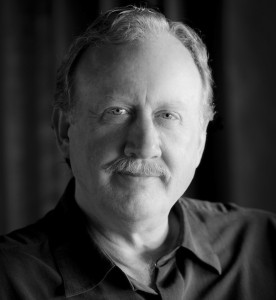William C. Rempel wrote the excellent non-fiction book “At the Devil’s Table” which I recently read and highly recommend. Mr. Rempel is a noted investigative journalist and editor for the L.A. Times and was kind enough to answer a few questions.

Q. How long have you been working on the book? Was it a difficult task?
A. The book started as a newspaper project in 1998. That’s when I first met Jorge Salcedo in a federal courtroom in Miami. He was appearing to seal a plea deal with the government. For many reasons that I’ll touch on later, it took more than eight years to gather what I needed for the newspaper account — a 3,700-word story that would lead a year later to my book contract with Random House. But because my access to Jorge was always severely restricted for security reasons, my ability to fully and efficiently debrief him also was severely restricted. As a result, what I viewed as the story of my journalistic career was, at the same time, the greatest frustration and most difficult assignment of my life. But it was worth it. The chance to get so deep inside the secret realms of international organized crime is a rare opportunity and a great treat for any journalist.
Q. How did you interview Mr. Salcedo since he is in the Federal Witness Protection Program?
A. I never learned where Jorge and his family lived. I don’t know now. And aside from that brief 1998 conversation in a Miami courtroom, all of my interviews with Jorge leading up to the 2007 newspaper article in the Los Angeles Times were on the telephone. He called me. I had no way to contact him. Sometimes months — and eventually years — went by between those phone calls. The U.S. Marshal’s Service, which operates the witness protection program, declined my formal request to arrange a private meeting. Before launching the book project, however, Jorge suggested that we meet for one extended session of interviews. Keep in mind that he is a security expert. He picked a neutral city. I told him the hotel where I’d made my reservation. A few days later we each flew there. I checked in to my hotel and waited. Once Jorge was satisfied that it was safe, he showed up at my door. We spent three days hunkered down in 18-hour debriefing sessions. After that, the telephone interviews resumed. I estimate that our phone sessions spanning the years since 1998 approach 1,000 hours.
Q. What is the difference between writing this book and a series of journalistic investigative articles?
A. There are at least two fundamental differences. The most obvious is scale. The L.A. Times story was 3,700 words, a relatively long article by modern newspaper standards. But keeping the pace up for 3,700 words is nothing compared to the demands of 100,000 words. And to succeed as a tale, those added words have to be full of story elements — action, dialogue, dilemmas. The investigative reporter in me had to remember that a stack of facts is not enough to make a good yarn. The other difference is research. The kind of detail that illuminates motive and character — and that allows the story to unfold — is detail that I was still accumulating a decade into my interviews with Jorge. I still cringe when I think about what I may have missed.
Q. How did you manage to find the balance in the book, providing too much or too little detail about the ordinary, or being dragged into the “bigger picture”?
A. Investigative reporters love detail. I’ve chased little nuggets of facts around the world, spent weeks away from my family, run up tens of thousands of dollars in expenses — all in pursuit of details. So, it’s no wonder journalists sometimes lose their sense of proportion. I have to admit that there are lots of details from this story that made my manuscript, but ended up deleted from the final version. A lot of the balance you note in your review should be credited to my editors. I list them in my acknowledgments. Moreover, in my 40 years of journalism good editors have saved me from embarrassment, or worse, too many times to mention.
Q. What are the challenges of book promotions in the social media age?
A. I’m fascinated by the speed and breadth of communications available to me and to Random House in sharing news about “At the Devil’s Table.” The challenge for me is figuring out how best to harness that enormous power. Fortunately, I have younger brothers escorting me into the future of tweets and WordPress and friendings and the like. So, ask me again in a few months and I may have a more complete answer.
Q. Shameless plug disguised as a question: Why do you love ManOfLaBook.com so much and often visit the website?
Wise guy answer: One of the great benefits of modern communications is the opportunity to be discovered — like “At the Devil’s Table” was discovered by ManOfLaBook and its highlights passed along to scores of book fans I don’t even know. I like what you’re doing. Bringing solo readers into a community built around shared stories is a terrific mission — and just one more reason to be hopeful for, and fascinated by, the new age of social media. Put me down as your latest fan.
Thank you Mr. Rempel. for taking the time to answer and the kind words.
Zohar – Man of la Book
Related articles
- New Calgary MP impresses longtime Tories (calgaryherald.com)
- Rookie Calgary MP Rempel adjusts to life in the spotlight (calgaryherald.com)
- Rookie MP Rempel gets running start with hot-potato oilsands file (canada.com)
- Calgary Centre North: Rookie Michelle Rempel retains seat vacated by Jim Prentice (calgaryherald.com)



No Comments